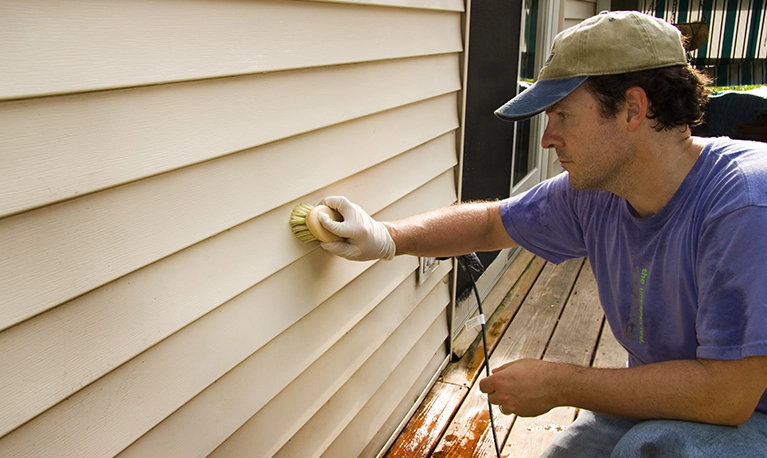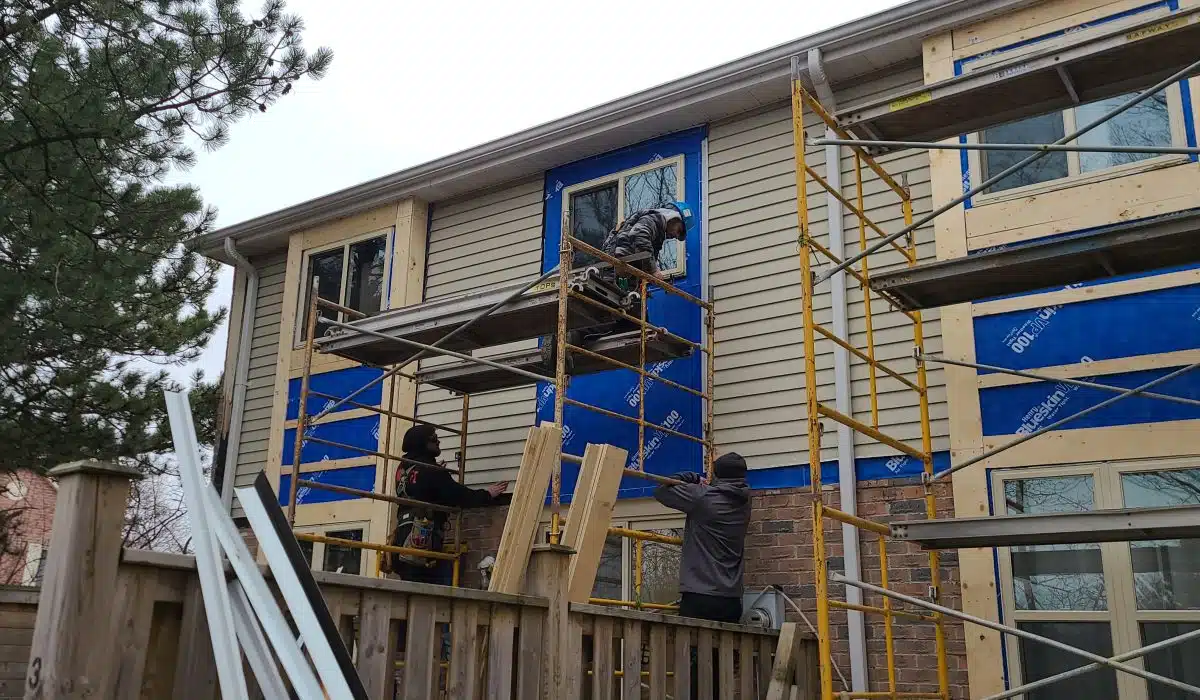Wood composite panels are engineered wood products made by binding wood fibers or particles together with adhesives under heat and pressure. These panels are widely used in construction and furniture manufacturing due to their versatility, durability, and sustainability. They offer several advantages over solid wood, including dimensional stability, resistance to warping and cracking, and uniformity in strength and appearance. Wood composite panels come in various types, such as particleboard, medium-density fiberboard (MDF), and plywood, each offering different properties and applications. Particleboard consists of small wood particles bonded together, MDF is made from fine wood fibers, and plywood comprises thin layers of wood veneer glued together with each layer’s grain perpendicular to the adjacent one.
The manufacturing process of wood composite panels involves utilizing waste wood materials effectively, reducing the demand for virgin timber and minimizing environmental impact. By using wood fibers or particles that would otherwise be discarded, these panels contribute to sustainable forestry practices and help mitigate deforestation. Additionally, their uniformity and consistency make them ideal for precise cutting and shaping, reducing material waste during production. Wood composite panels continue to evolve with advancements in technology and research, offering innovative solutions for various applications in construction, interior design, and furniture manufacturing while promoting environmental sustainability.
Steps to Repair Wood Composite Panels
Repairing wood composite panels typically involves addressing common issues such as scratches, dents, and minor damages. Here are some steps to repair wood composite panels:
Assess the Damage
Assessing the damage of wood composite panels is the first step in determining the appropriate repair strategy. Begin by thoroughly examining the panel for visible signs of damage such as scratches, dents, cracks, or discoloration. Take note of the size, location, and severity of the damage, as well as any underlying structural issues that may be present. It’s essential to assess whether the damage is superficial or if it extends deeper into the panel, as this will influence the repair approach.
Next, consider the impact of the damage on the panel’s overall integrity and functionality. Minor scratches or surface blemishes may only require cosmetic repairs, while more significant damages such as large cracks or structural weaknesses may necessitate more extensive repairs or even replacement of the panel. Additionally, evaluate the surrounding area to determine if there are any underlying factors contributing to the damage, such as moisture exposure or improper installation. By thoroughly assessing the damage of wood composite panels, you can develop a comprehensive repair plan to effectively restore the panel’s appearance and functionality.
Clean the Surface
Cleaning the surface of wood composite panels is an essential step in preparing them for repair or maintenance. Start by using a soft-bristled brush or a vacuum with a brush attachment to remove any loose dirt, dust, or debris from the surface. Pay close attention to crevices, corners, and seams where dirt may accumulate. For stubborn stains or grime, dampen a soft cloth with a mild detergent solution and gently wipe down the surface, being careful not to saturate the panel with water, as excessive moisture can cause damage.
Once the surface is free of dirt and stains, rinse it thoroughly with clean water to remove any remaining detergent residue. Use a separate clean cloth or sponge for rinsing to prevent recontamination. After rinsing, allow the wood composite panel to air dry completely before proceeding with any repairs or maintenance. Avoid using harsh chemicals or abrasive cleaners, as these can damage the surface of the panel and compromise its appearance and integrity. By properly cleaning the surface of wood composite panels, you can ensure that they are ready for repair or maintenance, prolonging their lifespan and maintaining their aesthetic appeal.

Fill in Scratches and Dents
When repairing scratches and dents on wood composite panels, it’s crucial to select the appropriate filler material and technique to ensure a seamless repair. Begin by choosing a wood filler or putty that matches the color and texture of the panel. Apply a small amount of filler to the damaged area using a putty knife, ensuring that it fills the scratch or dent completely. Smooth out the filler with the putty knife, removing any excess material, and allow it to dry thoroughly according to the manufacturer’s instructions.
After the filler has dried, gently sand the repaired area with fine-grit sandpaper to smooth out any rough edges and blend the repair with the surrounding surface. Take care not to sand too aggressively, as this can damage the panel’s finish. Once the surface is smooth and level, wipe away any dust with a clean cloth.
For deeper scratches or larger dents, multiple layers of filler may be necessary to achieve a satisfactory repair. Apply additional layers of filler as needed, allowing each layer to dry completely before sanding and applying the next. This process may require patience and precision to ensure that the repaired area matches the rest of the panel seamlessly. By filling in scratches and dents with the appropriate filler material and technique, you can effectively restore the appearance of wood composite panels and prolong their lifespan.
Sand the Surface
Sanding the surface of wood composite panels is a step to achieve a smooth and uniform finish, especially after repairing scratches, dents, or other imperfections. Begin by selecting fine-grit sandpaper, typically in the range of 180 to 220 grit, to avoid damaging the surface of the panel. Lightly sand the repaired area in a circular or back-and-forth motion, applying gentle pressure to gradually smooth out any rough patches and blend the repair with the surrounding surface. Take care to sand evenly across the entire area to avoid creating uneven spots or depressions.
After sanding the repaired area, wipe away any dust or debris with a clean, dry cloth to ensure a clean surface for finishing. Inspect the sanded area carefully to ensure that it is smooth and level with the rest of the panel. If necessary, repeat the sanding process with a finer grit sandpaper to achieve an even smoother finish. By sanding the surface of wood composite panels with care and precision, you can achieve a professional-quality result that enhances the appearance and durability of the panels.
Apply Touch-Up Paint or Finish
Applying touch-up paint or finish to the wood composite panel is the final step in the repair process, helping to restore the panel’s appearance and blend the repaired area seamlessly with the surrounding surface. Start by selecting a paint or finish that closely matches the color and texture of the panel. For small repairs, acrylic or enamel-based touch-up paints are often suitable, while larger areas may require a matching wood stain or varnish.
Using a small brush or sponge applicator, carefully apply the touch-up paint or finish to the repaired area, taking care to blend it evenly with the surrounding surface. Apply multiple thin coats as needed, allowing each layer to dry completely before adding the next. This helps to build up the color and achieve a consistent finish that matches the rest of the panel. Once the touch-up paint or finish has dried, inspect the repaired area to ensure that it blends seamlessly with the surrounding surface. Buffing the area gently with a soft cloth can help to remove any excess paint or finish and achieve a smooth, uniform appearance. By applying touch-up paint or finish with care and precision, you can effectively conceal repairs and restore the aesthetic appeal of wood composite panels.
Buff and Polish
After applying touch-up paint or finish to wood composite panels, buffing and polishing the surface can help to enhance its appearance and achieve a smooth, uniform finish. Begin by allowing the paint or finish to dry completely according to the manufacturer’s instructions. Once dry, use a soft, clean cloth to gently buff the repaired area in circular motions. This helps to remove any excess paint or finish and smooth out the surface, creating a more polished appearance.
For a more refined finish, you can use a fine-grit sandpaper to lightly sand the repaired area after the paint or finish has dried. Be sure to use a gentle touch and sand evenly across the surface to avoid creating uneven spots or scratches. After sanding, wipe away any dust or debris with a clean cloth before proceeding to polish the surface.
To polish the repaired area, apply a small amount of furniture polish or wax to a soft cloth and buff the surface in circular motions. This helps to restore shine and luster to the panel, creating a professional-quality finish. Take care not to apply too much pressure or polish, as this can cause streaking or damage to the surface. Once polished, inspect the repaired area to ensure that it blends seamlessly with the surrounding surface and achieves the desired appearance. By buffing and polishing the surface after painting wood composite panels, you can achieve a smooth, glossy finish that enhances the overall aesthetic appeal of the panels.
Consider Professional Assistance
While many repairs to wood composite panels can be done effectively with DIY methods, there are instances where professional assistance may be warranted. Complex damages, extensive structural issues, or repairs requiring specialized tools and expertise may benefit from the skills of a professional wood composite panels installer or carpenter. These professionals possess the knowledge and experience to assess the damage accurately and implement appropriate repair techniques to ensure the integrity and longevity of the panels.
Professional assistance may also be advisable if you lack the time, resources, or confidence to tackle the repair yourself. Attempting complex repairs without the necessary skills or equipment can potentially worsen the damage or compromise the panel’s structural integrity. By entrusting the repair to a qualified professional, you can have peace of mind knowing that the job will be done correctly and efficiently, saving you time and frustration in the long run. Additionally, professionals may offer warranties or guarantees on their work, providing further assurance of quality and satisfaction. Ultimately, considering professional assistance for repairing wood composite panels can ensure that the repairs are completed to a high standard, maintaining the functionality and aesthetics of the panels for years to come.
By following these steps, you can effectively repair minor damages to wood composite panels and restore their appearance and functionality.


